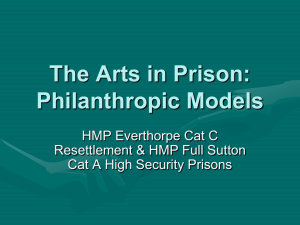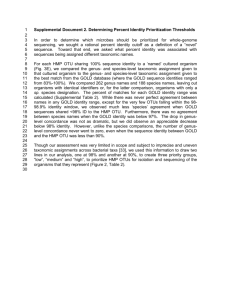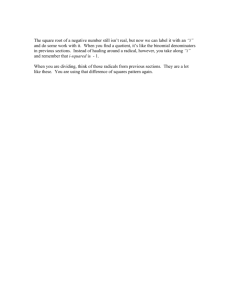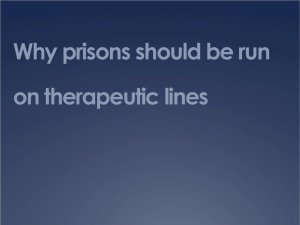S Samuel N. Foner (1920–2000) *
advertisement
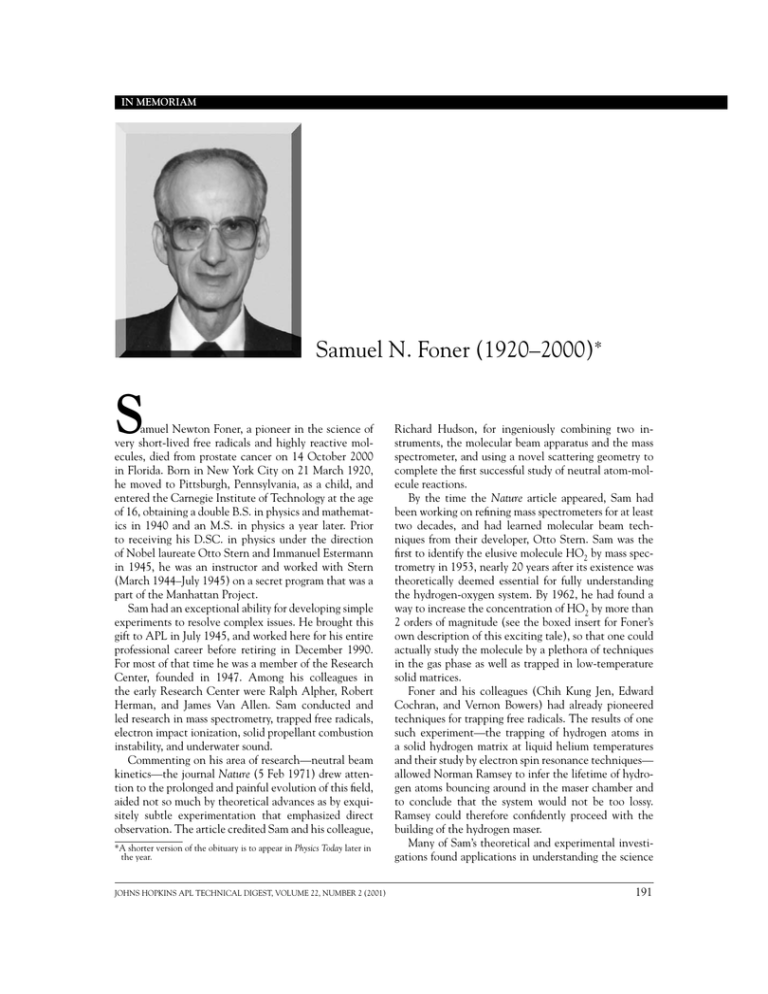
IN MEMORIAM IN MEMORIAM Samuel N. Foner (1920–2000)* S amuel Newton Foner, a pioneer in the science of very short-lived free radicals and highly reactive molecules, died from prostate cancer on 14 October 2000 in Florida. Born in New York City on 21 March 1920, he moved to Pittsburgh, Pennsylvania, as a child, and entered the Carnegie Institute of Technology at the age of 16, obtaining a double B.S. in physics and mathematics in 1940 and an M.S. in physics a year later. Prior to receiving his D.SC. in physics under the direction of Nobel laureate Otto Stern and Immanuel Estermann in 1945, he was an instructor and worked with Stern (March 1944–July 1945) on a secret program that was a part of the Manhattan Project. Sam had an exceptional ability for developing simple experiments to resolve complex issues. He brought this gift to APL in July 1945, and worked here for his entire professional career before retiring in December 1990. For most of that time he was a member of the Research Center, founded in 1947. Among his colleagues in the early Research Center were Ralph Alpher, Robert Herman, and James Van Allen. Sam conducted and led research in mass spectrometry, trapped free radicals, electron impact ionization, solid propellant combustion instability, and underwater sound. Commenting on his area of research—neutral beam kinetics—the journal Nature (5 Feb 1971) drew attention to the prolonged and painful evolution of this field, aided not so much by theoretical advances as by exquisitely subtle experimentation that emphasized direct observation. The article credited Sam and his colleague, *A shorter version of the obituary is to appear in Physics Today later in the year. JOHNS HOPKINS APL TECHNICAL DIGEST, VOLUME 22, NUMBER 2 (2001) Richard Hudson, for ingeniously combining two instruments, the molecular beam apparatus and the mass spectrometer, and using a novel scattering geometry to complete the first successful study of neutral atom-molecule reactions. By the time the Nature article appeared, Sam had been working on refining mass spectrometers for at least two decades, and had learned molecular beam techniques from their developer, Otto Stern. Sam was the first to identify the elusive molecule HO2 by mass spectrometry in 1953, nearly 20 years after its existence was theoretically deemed essential for fully understanding the hydrogen-oxygen system. By 1962, he had found a way to increase the concentration of HO2 by more than 2 orders of magnitude (see the boxed insert for Foner’s own description of this exciting tale), so that one could actually study the molecule by a plethora of techniques in the gas phase as well as trapped in low-temperature solid matrices. Foner and his colleagues (Chih Kung Jen, Edward Cochran, and Vernon Bowers) had already pioneered techniques for trapping free radicals. The results of one such experiment—the trapping of hydrogen atoms in a solid hydrogen matrix at liquid helium temperatures and their study by electron spin resonance techniques— allowed Norman Ramsey to infer the lifetime of hydrogen atoms bouncing around in the maser chamber and to conclude that the system would not be too lossy. Ramsey could therefore confidently proceed with the building of the hydrogen maser. Many of Sam’s theoretical and experimental investigations found applications in understanding the science 191 K. MOORJANI THE HUNT FOR THE ELUSIVE HO2* S. N. Foner and R. L. Hudson, “Mass Spectrometry of the HO2 Free Radical,” J. Chem. Phys. 36, 2681–2688 (1962). The paper on “Mass Spectrometry of the HO2 Free Radical,” published in 1962, has an interesting history. The reported work started back in 1953 when Dick Hudson and I published a paper that reported on a very sensitive, novel mass spectrometer that used a collision-free, modulated, molecularbeam sampling system to detect highly reactive species, such as atoms and free radicals, in chemical reactions.1 The wide applicability of the technique was illustrated by studies of low-pressure hydrogen-oxygen and methane-oxygen flames. Requests for reprints of the paper were exceptionally high, and we had to limit distribution to preserve some copies for ourselves. Shortly thereafter, we reported on the detection of the hitherto elusive HO2 free radical in the gas-phase reaction of hydrogen atoms with oxygen molecules.2 The hydroperoxyl radical (HO2) is an important chemical intermediate in theories of oxidation, combustion, and explosions; it has been implicated in such diverse phenomena as radiation damage in biological systems and the depletion of the atmospheric ozone layer. Although the existence of the HO2 free radical was established in the definitive 1953 experiments2 as a real physical entity rather than as a convenient theoretical construct, the concentration of the radical was inadequate for precise measurements of its thermochemical properties. The experiments had used the classical reaction for HO2 formation in the hydrogen-oxygen reaction, namely, H ⫹ O2 ⫹ M ជ HO2 ⫹ M, where M is a third body to carry away excess momentum. An electrical discharge was used to produce the hydrogen atoms. A problem with this approach is that the requirement for a three-body reaction is favored by high pressures, while the yield of hydrogen atoms from an electrical discharge peaks at low pressures. The result was that the concentration of HO2 attained in the experiments was rather low—about 0.001 percent of the overall gas composition. To improve the measurement situation and to make studies of this radical accessible to other techniques such as optical spectroscopy, microwave spectroscopy, and electron spin of rocket and missile flight and of underwater sound. Just before retiring from APL, he brought his incisive mind to the analysis of problems affecting the performance and reliability of Trident I (C4) and Trident II (D5) missiles. Foner had great enthusiasm for science and was cognizant of its role in addressing problems of national security. He often judged science projects at local schools, served as Science Coordinator of the U.S. Science Exhibit at the Seattle World’s Fair (1962), and was Advisor to the Scientific Affairs Division of NATO (1973–1982). At APL, he led the Mass Spectroscopy Group (1947–1952) and the Electronic Physics Group (1953–1983), and served as Vice Chairman of the 192 resonance, we investigated a number of alternative ways to generate HO2 radicals. Instead of synthesizing HO2 by adding hydrogen atoms to oxygen molecules, we found that various decomposition reactions involving hydrogen peroxide (H2O2) were more efficient sources of the HO2 radical. The simplest and most effective arrangement was to subject a rapidly flowing stream of H2O2 vapor to a low-power (barely visible) electrical discharge. What happens here is that the electrical discharge breaks some of the H2O2 into OH radicals that react very rapidly with the remaining H2O2 molecules in the highly exothermic reaction OH ⫹ H2O2 ជ HO2 ⫹ H2O. The concentration of HO2 radicals attainable was on the order of 0.3 percent, making it relatively easy to carry out experiments. The cited 1962 paper presented results on the production, identification, and determination of thermochemical energies of HO2 radicals. Measurements of the ionization potential of the HO2 radicals and the H ⫺ O2 bond dissociation energy were reported. Estimates were also made of some chemical reaction rates involving HO2 radicals. The paper probably attracted wide attention because it provided a comprehensive summary of mass spectrometric work on the HO2 free radical and its energetics and served as a useful jumping-off point for studies of that important radical by alternative methods. Since this work appeared, the HO2 free radical has been studied extensively and characterized in the gas phase by microwave spectroscopy, electron spin resonance, and infrared laser magnetic resonance, as well as mass spectrometry, and in low-temperature solid matrices by optical spectroscopy and electron spin resonance. REFERENCES 1S. N. Foner and R. L. Hudson, “The Detection of Atoms and Free Radicals in Flames by Mass Spectrometric Techniques,” J. Chem. Phys. 21, 1374–1382 (1953). N. Foner and R. L. Hudson, “Detection of the HO2 Radical by Mass Spectrometry,” J. Chem. Phys. 21, 1608–1609 (1953). 2S. *Samuel N. Foner, Johns Hopkins APL Technical Digest, Volume 7, Number 3 (1986). Milton S. Eisenhower Research Center (1975–1983) and Senior Scientist (1984–1990) in the Strategic Systems Department. He was also the founding member (1961–1963) and later Chairman (1963–1979) of the Editorial Board of the APL Technical Digest. Among many honors, Sam received the Physical Sciences Award of the Washington Academy of Sciences (1954) and the Lifetime Achievement Award for a distinguished publication record from APL (1990). He was a Fellow of the American Physical Society, the American Association for the Advancement of Science, and the Washington Academy of Sciences. He was also a member of the Cosmos Club. JOHNS HOPKINS APL TECHNICAL DIGEST, VOLUME 22, NUMBER 2 (2001) IN MEMORIAM Being a reserved and unassuming man, Foner was truly embarrassed by praise. My attempts to relay Estermann’s high opinion of Sam that his former advisor had expressed to me were met with a quick change of subject. Used to doing first-rate research at an institute where such research was internally funded, he never took to “proposal writing” or seeking “outside” funds, even when it became de rigueur. He often said that such actions would soon lead the funding agencies to dictate the problems that one could work on. He was not entirely wrong. Sam was an exemplary scientist who leaves a strong scientific legacy behind. Kishin Moorjani JOHNS HOPKINS APL TECHNICAL DIGEST, VOLUME 22, NUMBER 2 (2001) 193
